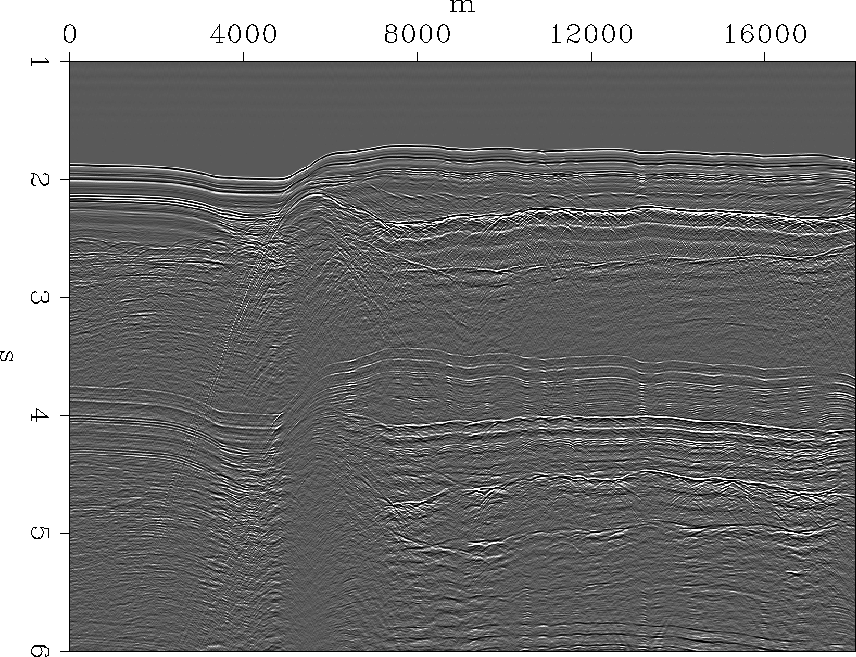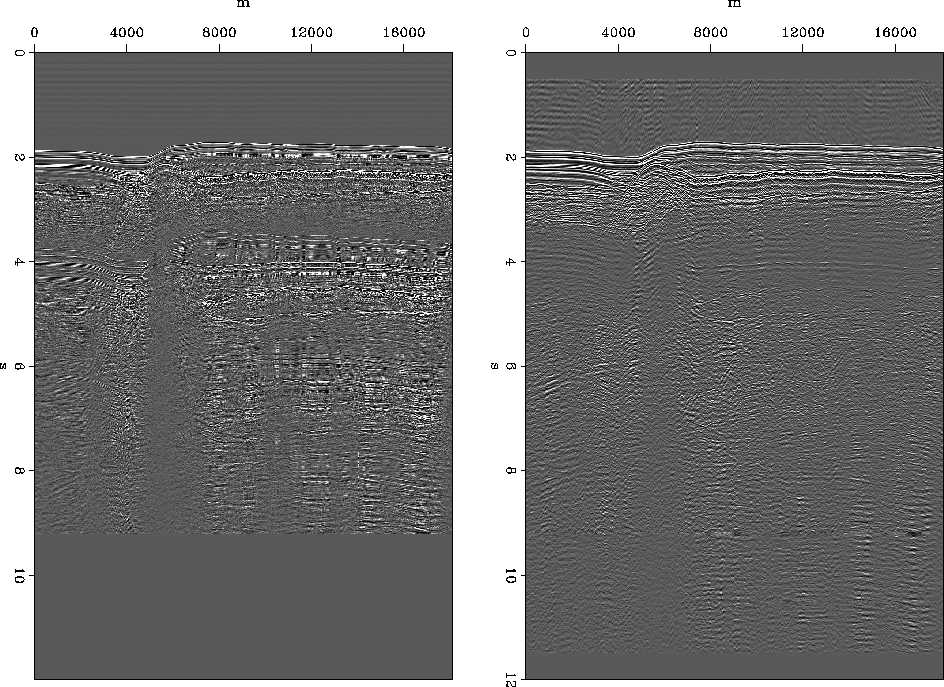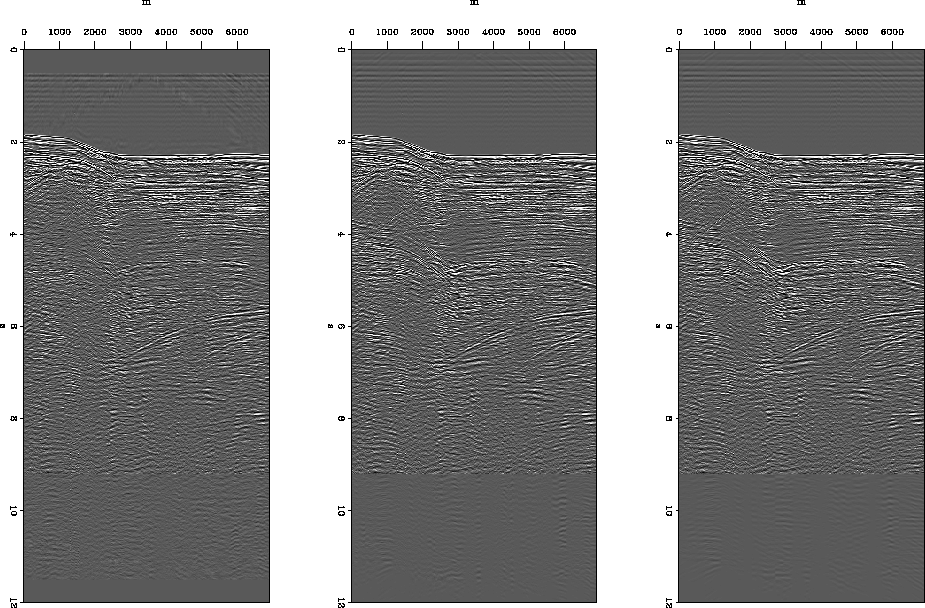|
deepInput
Figure 2 Time window of Gulf data near offset section. The sea floor at about 1.8 seconds and the bright reflector at 2.3 seconds generate separate multiple trains. |  |
Two near offset sections of a line from the Gulf of Mexico were used as inputs. The first has multiple trains with two periods; in addition to the water bottom, the bright reflector at about 2.3 seconds in the right half of the section produces its own multiples and peg legs (see Figure 2).
|
deepInput
Figure 2 Time window of Gulf data near offset section. The sea floor at about 1.8 seconds and the bright reflector at 2.3 seconds generate separate multiple trains. |  |
It is appealing to set up equation (2) to remove both lags at once, because the lags are superposed in the recorded data. For instance, the bright multiple at about 4.0 seconds is the first seafloor multiple of the 2.3 second reflector added to the first reflector multiple of the seafloor.
Filtering and subtracting gives the result shown in the right side of Figure 3, the left side shows the input. A good deep primary candidate in this data is the event near the left side of the section at about 6 seconds, dipping to the left.
 |
The second near offset section has just the water bottom induced multiples and peglegs, but makes an interesting test for filtering because it has some visible deep primary energy. After picking the sea bottom, upward continuing, filtering, and subtracting, the multiples are largely suppressed and the primaries largely preserved. Figure 4 shows this section before and after multiple suppression. The large primary diffraction visible at the right side of the input at about 6 seconds is well preserved in the output.
 |
The size of the filter and filter estimation window are important parameter choices. Here I use windows which are all or half the length of a trace, but generally only a single trace wide. Also, I use 100 or more filter coefficients to predict the multiples. For comparison, portions of results using smaller filters and wider windows are shown in Figure 5.
 |